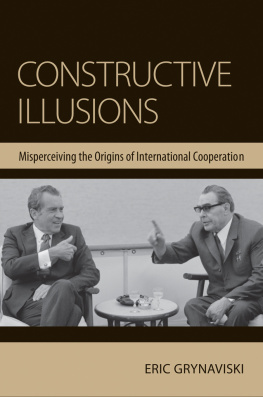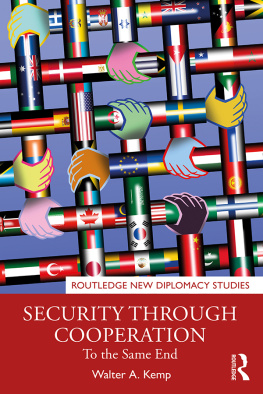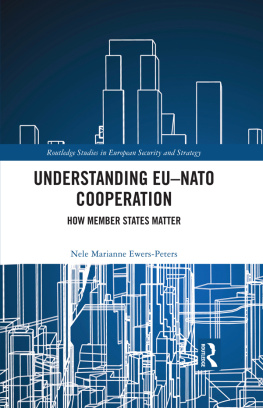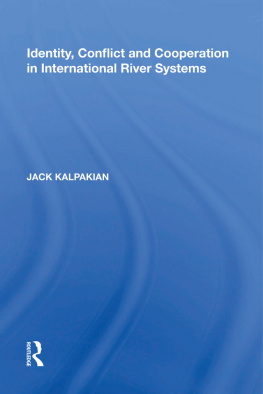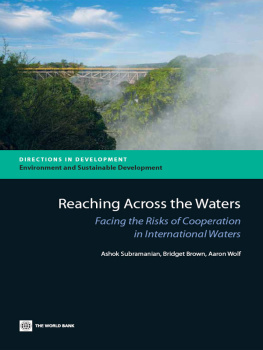ACKNOWLEDGMENTS
Like most first books, this one is a collective more than an individual effort. It began with the idea that many in International Relations draw too much on the idea that international politics takes place in an information-rich or thick social environment, and that even scholars interested in incomplete information or uncertainty implicitly posit more information or more shared ideas than is usually realized. Converting that idea into a book-length project, however, required a lot of assistance.
Countless friends and mentors have helped me on this project. In particular, I have benefited from comments, discussions, and suggestions from Robert Adcock, Bentley Allan, Michael Barnett, Austin Carson, Ingrid Creppell, Matthew Evangelista, Henry Farrell, Martha Finnemore, Charlie Glaser, Danny Hayes, Ted Hopf, Josh Kertzer, Tim Leucke, Eric MacGilvray, Jennifer Mitzen, Michael Neblo, Daniel Nexon, John Oates, Elizabeth Saunders, Susan Sell, Duncan Snidal, Daniel Verdier, and Clement Wyploscz. A deep debt goes to Randy Schweller and Alexander Thompson, who devoted time and patience seeing this project through to fruition, and especially to Alexander Wendt who served as a mentor, sounding board, and tough critic. He made sure I had the intellectual space to work on a project that, to the end, he disagreed with. He was unusually patient and generous, intellectually and personally. George Washington University also aided me through the University Facilitating Fund. Susan Sell and the Institution for Globalization and International Studies generously organized and hosted a book workshop. I am also indebted to the team at Cornell University Press, especially Roger Haydon, for walking me through the publication process with patience and good humor.
My biggest debt goes to my family. My wife has been supportive of me from the first day of the project, wearing a lot of hats as proofreader, interlocutor, and best friend. She will be glad that, if in finishing this project, she does not have to hear any more about Khrushchev, Brezhnev, Nixon, and Kissinger. This book (and especially the mistakes) is as much her product as it is my own. Our son Ethan was born as the first drafts were being completed and is amazingly now four years old. Watching him grow is the best mark of time passed in working on this book. He will be glad if he does not have to wear his Nixon shirt anymore to put me in the mood to write.
One fortunate aspect of research on the Nixon administration is the growing availability of high-quality books that document the Nixon administrations foreign policy. When I began this book, I spent substantial time working in the archives. By the end of the project, every find I had discovered was available through the Digital National Security Archives or published by the State Department through the Foreign Relations of the United States series. The Miller Center also produced easily accessible audio recordings. I include full citations to these documents, although most of them are now available electronically.
INTRODUCTION
To be sure, the international order had been founded on a misunderstanding and a misconception.
HENRY KISSINGER, A World Restored
When Captain Cook discovered Hawaii at the end of the eighteenth century, a remarkable case of cooperation began, perhaps one of the most remarkable in world history. As Marshall Sahlins controversially recounts the story of Cooks first contact with the Hawaiians, a series of coincidences led the Hawaiians to mistake Cook for Lono, the god of peace, music, and fertility. When Cook landed at Kealakekua, the Hawaiians dressed him as Lono, wrapping him in a red tapa cloth. Then they offered him a small pig as a sacrifice before ushering him into a temple for a lengthy ritual that culminated in a ceremonial feeding. The belief that Cook was Lono was so engrained that more than one hundred years later his bones were carried in the annual religious procession that honored him as a god.
Had that mast not broken, cooperation would have been a complete success, enabling the explorers to obtain food and water and the Hawaiians to avoid challenges to their religious beliefs.
If there are Cooks and Hawaiians in international politicsactors whose decisions to cooperate are founded on a misunderstandingthen it becomes a puzzle for much of International Relations (IR) theory. We usually think of misconceptions and misunderstandings as a source of discord: if only we understood one another better, it would be a more peaceful world. This episode, and others explored in this book, suggest otherwise: incomplete information, misperceptions, or sheer ignorance may generate cooperation in cases where complete information or shared ideas might lead to violence. Actors may cooperate precisely because they lack mutual understanding.
Scholars of all stripes tend to agree on the importance of improving communication, engaging in deliberation, and reducing misperceptions to solve conflicts and manage common problems.
Yet this agreement might be premature: Cooks and islanders do cooperate. There are many cases in international politics in which cooperation proceeds because of misperception, not shared ideas. During the Second World War, the US relationship with several allies suffered from serious delusions. As discussed in the next chapter, during the war the American public supported the Russian war-fighting effort and the lend-lease program that provided Russia with material support, in part, because of the odd belief that the Soviet Union was a burgeoning democracy with which it shared fundamental values. During the same war, most Europeans were shot on sight in Vietnam, but the United States and the Viet Minh engaged in extensive intelligence cooperation. While Europeans in general, and the French in particular, were viewed as imperialist enemies of Vietnamese nationalism, the US legacy as a former colony and Roosevelts anti-imperialism convinced the Viet Minh leadership that America was a dependable ally. As Captain Herbert Bluechel, an American officer serving in Vietnam during the war, reported in 1945, the Viet Minh leaders expressed the hope that Americans would view favorably their bid for independence, since we ourselves fought for and gained our independence under a situation considered to be similar to that as exists in Indo China today.
The origins of US involvement in Taiwan, which has led to an unlikely and prolonged episode of international cooperation, was in part premised on a mistaken judgment of China and its people by Asia first Republicans in the 1950s.
Many cases of cooperation among European powers are also, in part, the result of misperceptions. Before the First World War, for example, Great Britain and Germany entered a dtente in 1911 that resulted in successful crisis management, an understanding concerning the division of Portuguese colonies in the event of the collapse of the Portuguese empire, an agreement on the Baghdad Railway, and an implicit deal on naval arms. Sean Lynn-Jones argues persuasively that the Anglo-German dtente was based on mutual misperceptions. Germany thought cooperation meant British neutrality in the event of a Continental war, whereas Britain believed that dtente meant a limitation on German military ambitions through cooperation. In each case, cooperation was made possible because of a failure to communicate.
This book has two primary arguments. The first, outlined in the next section, is that under certain conditions there are illusions that are necessary for international cooperation, which undermines the familiar narrative of the importance of communication and mutual understanding for peace. The second, outlined at the end of this chapter, explains why this matters for IR theory in its broadest dimensions. One of the primary reasons we posit the prevalence of common knowledge, shared ideas, and norms is that there are high levels of cooperation in the international system. Many IR scholars, influenced by sociological or economic theories, argue that the existence of cooperation is prima facie evidence for the existence of shared ideas. This argument takes direct aim at the prevalence of common knowledge or shared ideas. If cooperation occurs without shared ideas in important casesif there are constructive illusionsthen we should rethink the ways in which we describe the international system.

